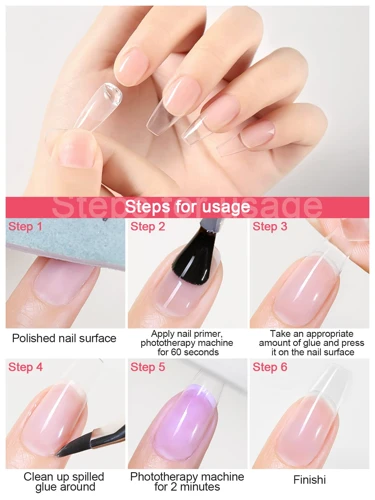The allure of eco-friendly flooring has led many homeowners to choose bamboo for its durability and aesthetic appeal. Installing bamboo flooring using glue can be a rewarding DIY project or a professional endeavor, with the end result being a beautiful and long-lasting surface.
Benefits of Bamboo Flooring
Bamboo flooring boasts remarkable durability, natural beauty, and sustainability. Its rapid growth rate means it’s more replenishable than hardwood, making it an environmentally conscious choice. Additionally, bamboo floors are known for their resistance to moisture and their ability to withstand the rigors of high traffic areas.
Choosing the Best Glue for Bamboo Flooring
Selecting the best glue for bamboo flooring is crucial for a successful installation. The market offers various bamboo floor glue products designed to provide a strong bond, resist moisture, and maintain flexibility. It’s essential to choose an adhesive that complies with your bamboo flooring specifications and environmental standards.
Preparation for Glue Down Bamboo Flooring
Acclimating Your Bamboo Flooring
Before the bamboo flooring install begins, acclimation is necessary to balance the material’s moisture content with the environment where it will be installed. This process usually takes at least 48 hours and helps prevent future expansion or contraction that could compromise the floor’s integrity.
Tools and Materials Needed for Bamboo Flooring Glue Installation
- Tape measure
- Trowel
- Bamboo floor glue
- Moisture barrier (for concrete subfloors)
- Spacers
- Saw for cutting planks
- Heavy roller
Assessing and Preparing the Subfloor
A level and clean subfloor is imperative for a successful bamboo flooring glue installation. Any debris, nails, or irregularities should be addressed to ensure a smooth surface for laying the bamboo planks.
Concrete Subfloor Requirements
Concrete subfloors must be fully cured and dry before beginning the installation process. It’s also important to check for flatness; variations should not exceed 3/16 inch over a 10-foot radius.
How to Test a Concrete Subfloor for Moisture
Moisture levels in concrete subfloors can wreak havoc on bamboo flooring. Conducting a moisture test can be as simple as taping down a plastic sheet and checking for condensation after 24 hours, or as thorough as using a moisture meter to obtain precise readings.
Subfloor Preparation for Optimal Adhesion
Ensuring your subfloor is primed for the bamboo flooring adhesive is a step you cannot overlook. Cleaning the surface, filling gaps or cracks, and applying a moisture barrier if necessary are all vital to the preparation process.
Installing Bamboo Flooring with Glue
How to Install Bamboo Flooring on Concrete
When considering how to install bamboo flooring on concrete, start by spreading the adhesive with a trowel at a 45-degree angle. Working in manageable sections, begin at the longest uninterrupted wall and proceed with the installation.
Applying Bamboo Floor Glue
Apply the bamboo floor glue carefully, following the manufacturer’s instructions. Use the correct trowel size to ensure a consistent spread that will not only bond but also help with sound reduction and cushioning.
Laying Bamboo Flooring on Concrete
While laying bamboo flooring on concrete, carefully place the planks onto the glue, ensuring each piece is snug against its neighbor. Use spacers along the walls to maintain an expansion gap as recommended by the flooring manufacturer.
Securing Bamboo Planks with Bamboo Flooring Adhesive
After placing the planks, it is important to secure them into the bamboo flooring adhesive. Rolling the floor with a heavy roller helps in achieving a solid bond and avoiding hollow spots beneath the flooring.
Post-Installation Tips and Maintenance
Care for Glue Down Bamboo Flooring
Post-installation care is critical for the longevity of your new floor. Cleaning spills immediately, using protective pads under furniture, and following the manufacturer’s care instructions will help maintain the beauty of your glue down bamboo flooring.
Addressing Common Installation Challenges
Challenges such as managing adhesive open time and alignment of planks are common during bamboo flooring installation. Patience and careful attention to detail during the installation process can mitigate these issues.
Troubleshooting Bamboo Flooring Glue Installation
Dealing with Moisture Issues
Moisture issues can cause warping or buckling in bamboo flooring. It’s imperative to address any signs of moisture immediately, whether by repairing leaks or using dehumidifiers to manage indoor humidity levels.
Ensuring Proper Adhesion and Avoiding Common Mistakes
Ensuring proper adhesion is vital for avoiding common mistakes like inadequate glue coverage or insufficient pressure during installation. Adhering to the bamboo flooring installation instructions can help prevent these errors.
Conclusion
Reviewing Bamboo Flooring Installation Instructions
Reviewing the bamboo flooring installation instructions thoroughly before you begin is essential for a successful installation. This ensures that all necessary steps are followed and that the flooring is installed according to the manufacturer’s guidelines.
If you’re considering a DIY flooring project, you might be interested in exploring various adhesive methods. While you’re preparing to install bamboo flooring with glue, it can be helpful to understand other adhesive techniques as well. Check out our detailed guides on how to glue outdoor carpeting, for a strong and durable bond against the elements, or perhaps our tips on how to re-glue vinyl flooring if you need to tackle a repair job. And for those interested in creative projects, don’t miss our fun article on how to make sand sculptures with glue. Each of these can provide you with valuable insights and techniques for your flooring or crafting endeavors.
Professional Installation vs. DIY
Deciding between professional installation and a DIY approach depends on your level of comfort with home improvement projects. While professional installers bring expertise, a DIY project can be rewarding and cost-effective if you’re well-prepared and detail-oriented.


